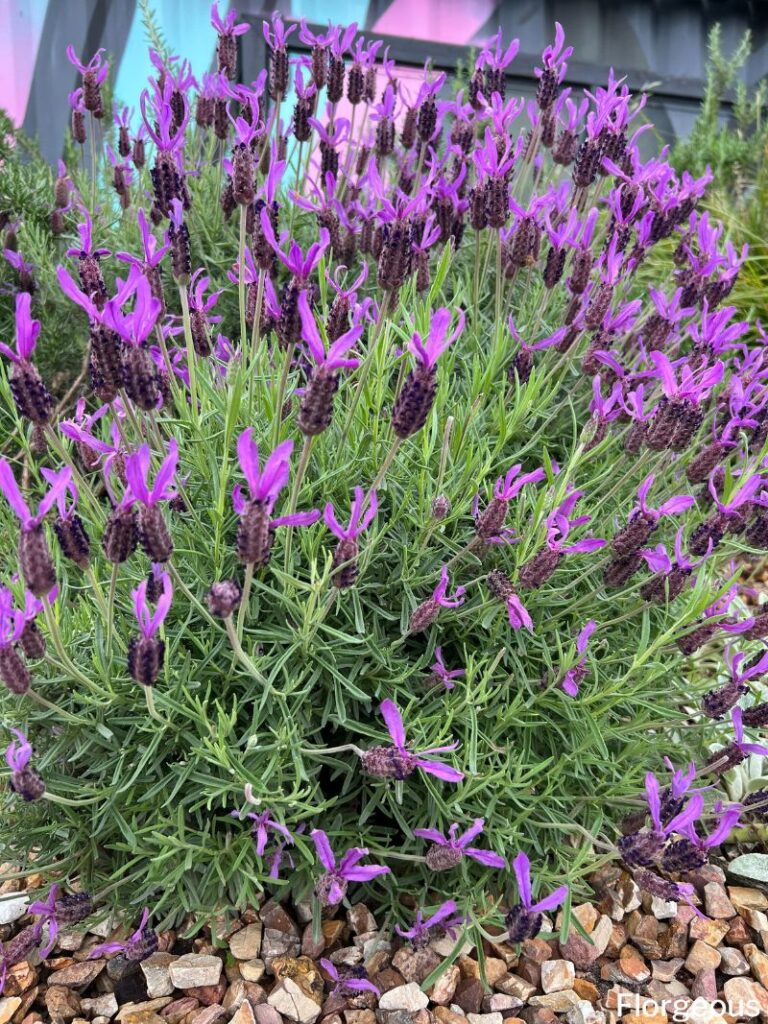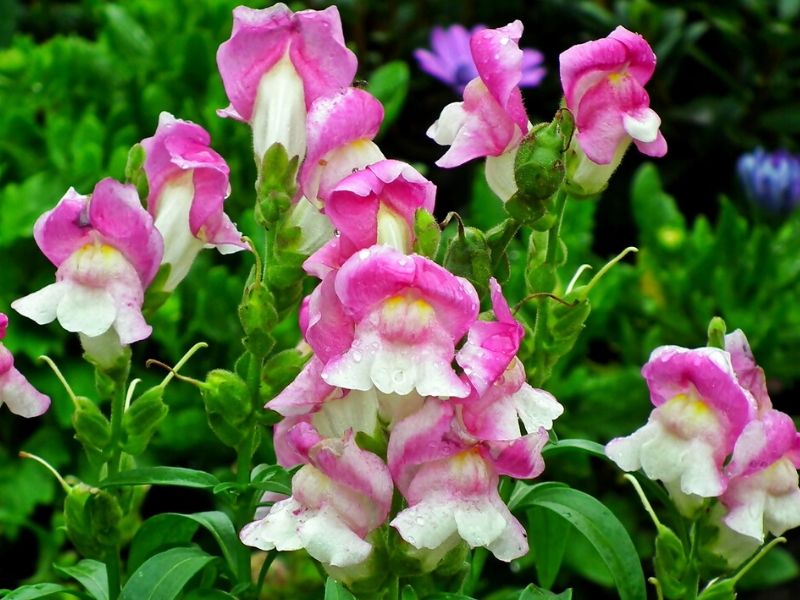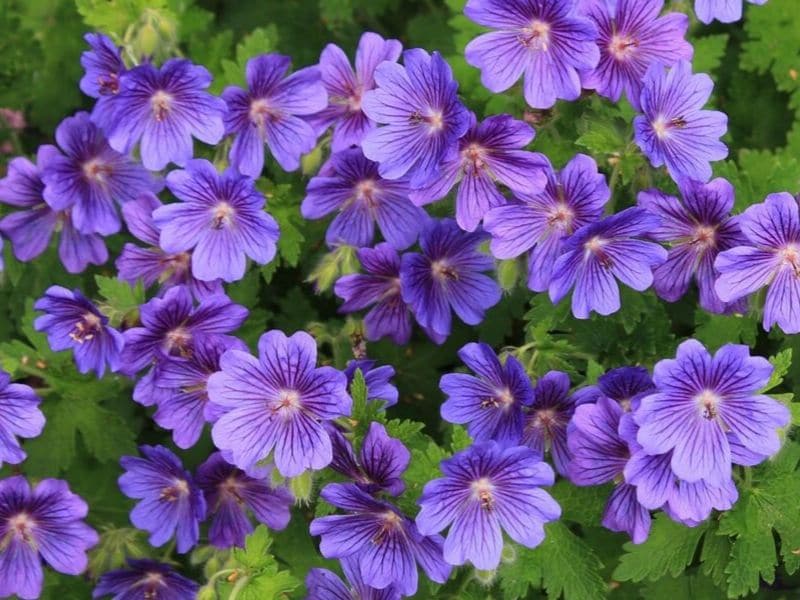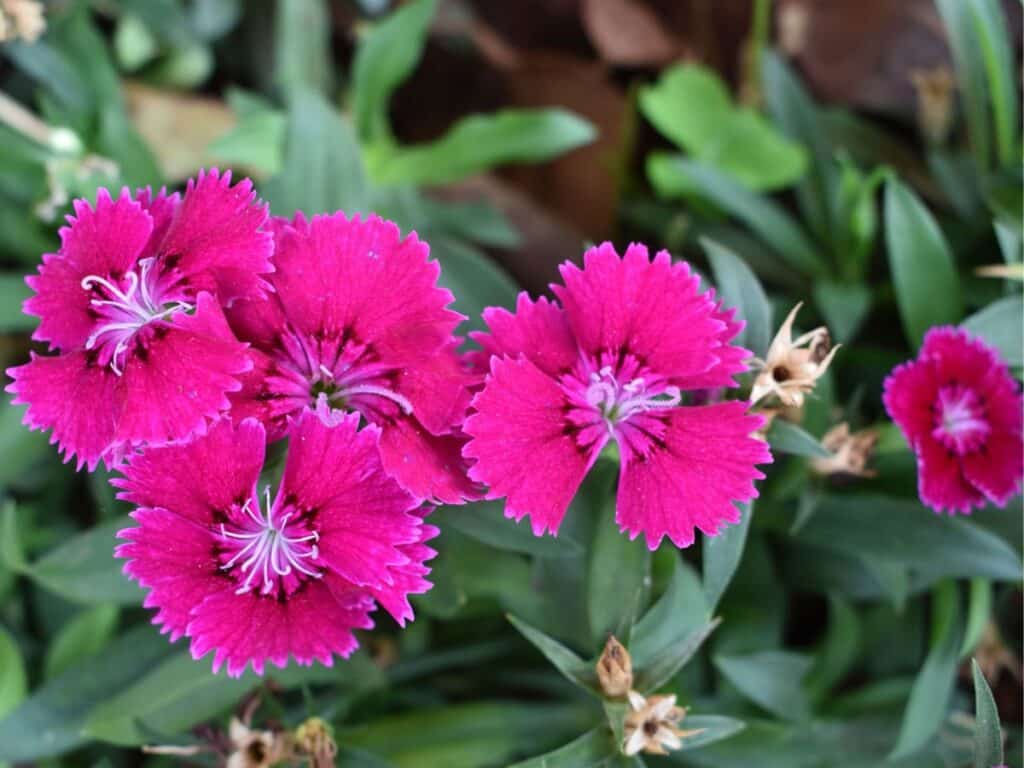Dianthus flowers (Dianthus caryophyllus), also known as sweet william or pinks, depending on variety, are ideal plants for sunny garden spaces and for gardeners who love lots of vivid blooms. There are almost 350 different species of this flowering plant and their colors range from white to deep red.
For colorful gardens, you can combine different varieties of these old-fashioned flowers or you can pair them with other plant species. Dianthus companion plants like lavender, snapdragons, valerians, columbines, and geraniums are terrific for creating striking garden beds in showy cottage gardens.
Let’s take a closer look at these companion plants and discover some creative ways to use them in your landscape.
What to Grow with Dianthus
For companion planting, it is always best to combine plant species with similar growing requirements and a similar growing season together.
Dianthus plants are at their happiest if they are established in well-drained soil and they should be planted in full sun or they won’t produce flowers. These dianthus blooms are also drought tolerant and prefer dryer soil conditions or they can develop root rot.
Let’s look at these companion plants that grow well with dianthus in direct sun and dry soil.
Lavender

Lavender (Lavandula spp) are ideal low-maintenance plants to pair with dianthus because their vivid purple flowers on tall spikes will add lots of vertical contrast to your garden and will complement the charming red, pink, or white dianthus flowers.
The sweet spicy scent of lavender is also a welcome addition to any garden and will attract lots of charming butterflies to your garden.
These beautiful flowers are good dianthus plant companions because they can tolerate direct sun and, as with dianthus plants, they prefer dry soil conditions.
When you plant dianthus, you should be careful to establish taller plants like lavender in the back. This combination will create a showy purple backdrop with lots of colorful blooms in the front.
Snapdragons

Snapdragons (Antirrhinum) are also the best companion plants for dianthus if you want to add some height and color to your garden beds.
This plant is beloved because it produces lots of striking bell-shaped flowers on tall spikes in a huge variety of colors. These bright flowers are ideal cut flowers to use indoors and they will add lots of charm to your dianthus bed.
Snapdragons grow very well in rich free-draining soil and they should be planted in bright sunlight so they can produce lots of flowers.
They are low-maintenance plants but pinching the tops of the young plants will make them bushier and will increase the number of blooms on each plant. Deadheading the flowers will also extend the bloom season until late fall.
It is best to grow dianthus in front of snapdragons because they are shorter and will act as a ground cover to keep the soil around your taller plants cool and moist for longer.
Red Valerian
Valerians (Centranthus ruber), also known as spur valerian, devil’s beard, kiss-me-quick, or fox’s brush, are terrific companion plants for dianthus if you want to add lots of texture to your garden.
These charming plants produce clusters of tiny flowers that will add lots of color and charm to your garden while the colorful foliage is great for filling out your beds.
Kiss-me-quicks have similar growing conditions as dianthus plants since they also prefer well-drained soil and a full sun position.
This perennial plant should be positioned behind your dianthus plants because they are taller with a maximum height of 3 feet tall.
Columbines

Columbines (Aquilegia), also known as European crowfoot or granny’s bonnet, is a very interesting flowering plant to include in your garden.
This plant produces interesting double-petaled flowers in a variety of colors like purple, deep pink, or yellow as well as mixed colors. These vivid bell-shaped flowers are great for creating an interesting backdrop behind your sweet Williams or pinking shears.
Aquilegias will grow well in well-drained soil and prefer a partial shade position but can grow well in direct sun in cooler climates. These showy blooms also require a little bit more water and will benefit a great deal from the ground cover that the pinks can create around them.
Granny’s bonnets are taller and should be planted in the back of your garden bed or the center of a container with dianthus in the front or around these taller varieties.
Geraniums

Geraniums (Geranium spp.) are very popular in sunny climates and dry regions and are great for creating showy borders or short hedges.
These plants with their vivid blooms will look especially charming if you grow a row of dianthus in front of them to conceal the stems or base of these shrub-like flowers.
Geraniums are pretty easy to grow from cuttings and should be planted in full sun (except for ivy geranium which prefers dappled shade) in well-drained soil. They are also quite drought tolerant and will pair well in the dry garden beds that dianthus prefers.
It is best to grow geraniums with their ruffly blooms in the back with shorter dianthus flowers in the front of your garden so both plants can be visible.
What NOT to Grow with Dianthus
Dianthus flowers are sun-dependent and they prefer dry soil conditions. If you grow these flowers in moist soil or in areas where they receive too much shade, they won’t flower properly or can die.
Because of their growing conditions, you should avoid planting them with shade-loving plants like hostas, hydrangeas, ferns, creeping jenny plants, and begonias because these plants will only wilt and die if they are placed in a sunny and dry bed.
Landscaping Ideas for Dianthus and Companions
When you are planting dianthus, it can be fun to play with different landscaping concepts and ideas.
Different garden accessories and concepts can help you create gardens that are even more aesthetically pleasing.
Here is a quick look at a couple of charming landscaping ideas for your Dianthus gardens.
Mixed Borders or Edges
Low-profile flowering plants like dianthus are great for creating striking edges or borders around garden beds, beside walkways, or in front of rocky walls. The vivid flowers will help create some contrast with your lawn and can add lots of charm and cheer.
While you can create mixed borders with different varieties of dianthus, your borders will look especially charming if you mix in other flowering species like lavender or valerians.
Rock Gardens
Dianthus flowers are terrific editions to rocky or xeriscape gardens because they are extremely water efficient and heat tolerant.
In these dry garden designs, you can pair them with other beautiful drought-tolerant species like lavender, geraniums, or columbines to add some color to the natural stone hues.
Container Gardens
Dianthus flowers grow very well in containers and will look charming if you pair them with other florals in large garden pots.
These flowers are great as a filler plants for your containers and can be paired with taller flowering plants like snapdragons or geraniums to create showy garden flower bouquets or interesting window boxes.
FAQs
Where is the best place to plant dianthus?
The best place to plant dianthus is in a location with full sun and well-draining soil. Dianthus species thrive in sunny spots, so choose a location in your garden that receives at least 6-8 hours of sunlight per day.
Do dianthus plants spread?
Yes, some varieties of dianthus can spread through self-seeding or by forming clumps over time. However, their spreading tendency varies depending on the species and growing conditions. Deadheading spent flowers and dividing clumps periodically can help control their spread and maintain their appearance.
How do I get my Dianthus to bloom more?
To encourage more blooms on your dianthus plants, deadhead spent flowers regularly throughout the growing season. This will promote continuous flowering and prevent the plant from diverting energy into seed production. Additionally, provide them with proper care, including regular watering, fertilization, and sunlight.
Do Dianthus like pots or ground?
Dianthus can thrive both in pots and in the ground, depending on your preferences and growing conditions. In pots, ensure they have well-draining soil and adequate drainage holes to prevent waterlogged conditions. In the ground, plant them in well-amended soil with good drainage for optimal growth. Choose the growing method that best suits your space and gardening needs.
Final Thoughts
Lavender, snapdragons, valerians, columbines, and geraniums are all good companion plants to grow alongside your dianthus flowers if you want to add lots of texture and charm to your garden. We hope that our guide made it easier for you to select suitable companions and that you found some inspiration for your garden.
Don’t forget to learn more about dianthus flower meaning to see why gardeners love growing this plant.
*image by wirestock_creators/depositphotos







